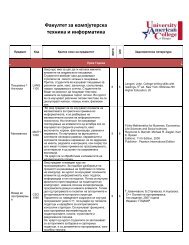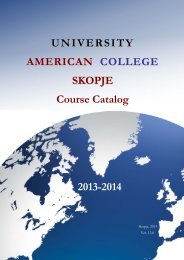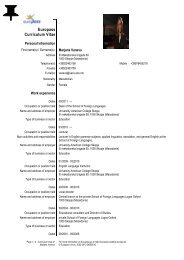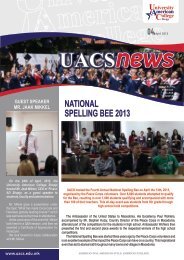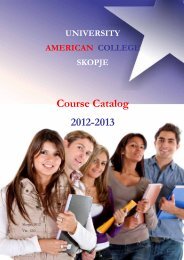UACS Collection of Abstracts 2011 - University American College ...
UACS Collection of Abstracts 2011 - University American College ...
UACS Collection of Abstracts 2011 - University American College ...
You also want an ePaper? Increase the reach of your titles
YUMPU automatically turns print PDFs into web optimized ePapers that Google loves.
General OutlookAuthor(s)Journal <strong>of</strong> paperappearanceConference <strong>of</strong> paperappearanceTitle <strong>of</strong> the paperAbstractJEL classificationTome NenovskiInternational Conference: “From market to identity”, <strong>University</strong> <strong>American</strong><strong>College</strong> Skopje, May 19. <strong>2011</strong>.“Ricardo`s Effect: From Idea To Implementation”In international trade, countries should use their relative comparativeadvantages. They should specialize in production and export <strong>of</strong> goods andservices that compete with lower relative cost <strong>of</strong> production to othercountries and to exchange those products to other products for whichhome manufacturing would be more expensive.That is the theory <strong>of</strong> David Ricardo, one <strong>of</strong> the founders <strong>of</strong> classical politicaleconomy. Although it is set back in 1817, today that theory forms the basisfor explaining the benefits <strong>of</strong> international trade, i.e. the incentives andmotives <strong>of</strong> national economies to trade with each other. At its core lies themodel <strong>of</strong> perfect competition. This model is the basis for today's advocacyfor free trade within the EU, trade with no tariffs and no other restrictions.The end result <strong>of</strong> the Ricardo model <strong>of</strong> comparative advantage leads to agradual flattening <strong>of</strong> prices <strong>of</strong> products which are traded betweeneconomies based on comparative advantages. If there is free tradebetween foreign countries, it is clear that the products will move fromareas with lower prices, to areas with higher prices. The realization <strong>of</strong> sucha theory today is a plan within the EU.However, the practice opposes these fundamental values <strong>of</strong> Ricardo’stheory because:‐ The model <strong>of</strong> perfect competition, to which EU aspires, practicallydoes not exist today because today in the EU market structures thatrestrict competition prevail;‐ The model does not explain how countries that trade with eachother will establish a balance in the trading price;‐ The model does not explain how to overcome the problem <strong>of</strong>different tastes <strong>of</strong> consumers in different countries;‐ The model does not explain how to reduce transport costs asbarriers to foreign trade, and so on.Eliminating such weaknesses will upgrade Ricardo’s theory and make itvalid in current economic conditions. That way it could really be effective inrealizing the vision <strong>of</strong> a “Europe without borders”.Ricardo effect; foreign trade; comparative advantages; prices equilibrium;free tradeF1 – Trade49


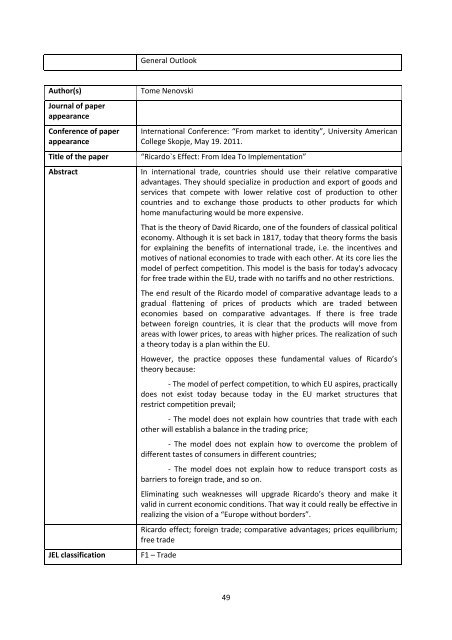
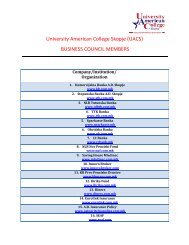



![amerikan kolex ]e bide prv univerzitet od treta generacija vo ...](https://img.yumpu.com/47278343/1/190x252/amerikan-kolex-e-bide-prv-univerzitet-od-treta-generacija-vo-.jpg?quality=85)

